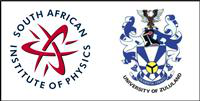Speaker
Apply to be<br> considered for a student <br> award (Yes / No)?
Yes
Would you like to <br> submit a short paper <br> for the Conference <br> Proceedings (Yes / No)?
No
Abstract content <br> (Max 300 words)
During the last decades astrophysicists have been interested in the origin of the microwave background radiation. Compton scattering is the main process by which the microwave background radiation photons are scattered by electrons and this causes a deviation from the Planckian spectrum (historically referred to as Sunyaev Zeldovich effect). Lots of studies have been done about the change in intensity of the CMB radiation due to Compton scattering in non-relativistic and relativistic regime. In galaxy clusters the microwave photons are constantly being hit by relativistic electrons via Thomson scattering which induces a polarization in the CMB. This polarization effect has gained particular interest both in experimental and theoretical point of view. We present here a generalixed description of the polarization in Compton scattering in the Thomson regime in a covariant relativistic approach. We show here how from the Relativistic Polarized Boltzmann equation we can describe the polarization in Compton scattering for any population of electrons, whether thermal or non-thermal, in a very consistent manner by extracting the Stokes parameters from the distribution function of the photons and compute them. In order to arrive at our results we assume single scattering approximation, Thomson’s scattering and un-polarized CMB prior to first scattering. In the relativistic regime the Stokes parameters are no longer independent on the galaxy cluster parameters and this gives a lot of information about the galaxy cluster itself such as temperature and optical depth. This method is used to compute the Stokes parameters for non-thermal population of electrons which are the main source of radio halos in clusters. Applications to various cosmic structures and radio (SKA, MeerKAT) and mm (MILLIMETRON, SPT) experiments are discussed.
Main supervisor (name and email)<br>and his / her institution
Sergio Colafrancesco
Sergio.Colafrancesco@wits.ac.za
University of Witwatersrand
Level for award<br> (Hons, MSc, <br> PhD)?
Msc

